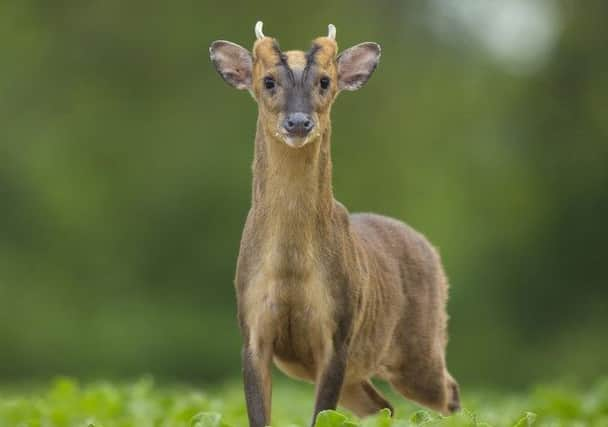Invasive Chinese deer species needs to be eradicated, says MLA


Over 100 sightings of the Reeves Muntjac deers have been reported – primarily in the Ards Peninsula – prompting DUP Assemblyman Jim Wells to call for the removal of this dangerous species before it gets out of control.
Mr Wells said the small dog-sized deer has a “voracious appetite for trees, crops and plants”.
Advertisement
Hide AdAdvertisement
Hide Ad“They will eat us out of house and home if allowed to become established,” he said.
“These deers will have huge impact on the livelihoods of farmers and foresters as well as damage to private gardens. There is also a probability of it causing road accidents.”
Former RSPB employee Mr Wells said the species came to Northern Ireland as a “showpiece for a private collector” but added they are an animal that are very good at escaping.
“There are tens of thousands of these deers running around southern England. This came from five muntjacs who escaped from Woburn Abbey. I’m very sure we’ve more than five here so we need to act fast.”
Advertisement
Hide AdAdvertisement
Hide AdThe Centre for Environmental Data and Recording has received 103 reports of muntjacs in Northern Ireland.
In 2009 a muntjac was knocked down and killed close to Kircubbin and in 2010 the Mount Stewart muntjac action group was established in response to increased sightings around the Ards Peninsula. The deers have also been spotted more recently near Comber and Loughgall.
As an invasive species from China, the deers pose a much greater risk than the three species of deer which have become established in Northern Ireland – fallow, red and Japanese sika. They are also harder to cull because of their small size, meaning they can seek cover more easily.
Andy Crory of Ulster Wildlife Trust said: “In all cases, whether established or invasive, deer populations need to be managed so they do not get out of control and cause damage to native habitats. If left unchecked, they can also pose a risk to road users.”
Advertisement
Hide AdAdvertisement
Hide AdThe Department of Agriculture said it has developed an exclusion strategy and contingency plan for a range of non-native deer, including the muntjac.
It said: “We will work very closely with all the stakeholders to do our very best to eradicate this very worrying, troubling and dangerous invasive species.”